How will the reading in the ammeter A of Fig. 6.39 be affected if another identical bulb Q is connected in parallel to P as shows. The voltage in the mains is maintained at a constant value.
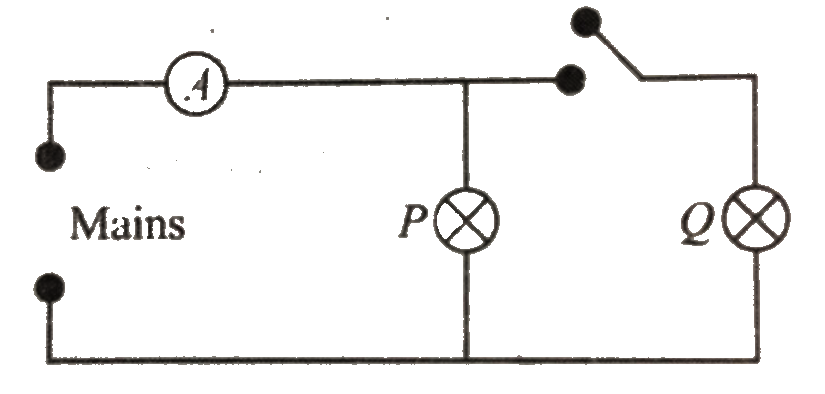
The reading will be reduced to one-half.
the reading will not be affected.
The reading wil be double of the previous one.
The reading will be increased fourfold.
The correct Answer is:C
Resistance is halved. Current is doubled.
Topper's Solved these Questions
- ELECTRICAL MEASURING INSTRUMENTSBOOK - CENGAGE PHYSICS ENGLISHCHAPTER - ELECTRICAL MEASURING INSTRUMENTSEXERCISE - Multiple Correct
7 Videos
- ELECTRICAL MEASURING INSTRUMENTSBOOK - CENGAGE PHYSICS ENGLISHCHAPTER - ELECTRICAL MEASURING INSTRUMENTSEXERCISE - Assertion-Reasoning
7 Videos
- ELECTRICAL MEASURING INSTRUMENTSBOOK - CENGAGE PHYSICS ENGLISHCHAPTER - ELECTRICAL MEASURING INSTRUMENTSEXERCISE - Subjective
18 Videos
- ELECTRIC POTENTIALBOOK - CENGAGE PHYSICS ENGLISHCHAPTER - ELECTRIC POTENTIALEXERCISE - DPP 3.5
15 Videos
- ELECTROMAGNETIC INDUCTIONBOOK - CENGAGE PHYSICS ENGLISHCHAPTER - ELECTROMAGNETIC INDUCTIONEXERCISE - compression type
7 Videos
Similar Questions
An electric bulb rated '220 V, 60 W' glows when connected with 220 V mains.
Another identical bulb is connected in series with the first one and the system is connected across the 220 V mains. Draw a diagram to show the arrangement and find : (a) the rate of consumption of energy in each bulb, and (ii) total power consumed.
View SolutionThree resistance P,Q,R each of 2Ω and an unknown resistance S from the four amrs of a Wheatstone's bridge circuit. When a resistance of 6Ω is connected in parallel to S the bridge gets balanced. What is the value of S ?
View SolutionThree resistance P,Q,R each of 2Ω and an unknown resistance S from the four amrs of a Wheatstone's bridge circuit. When a resistance of 6Ω is connected in parallel to S the bridge gets balanced. What is the value of S ?
View SolutionAn ideal ammeter (zero resistance) and an ideal voltmeter (infinite resistance) are connect as shows in Fig. 6.47. The ammeter and the voltmeter readings are
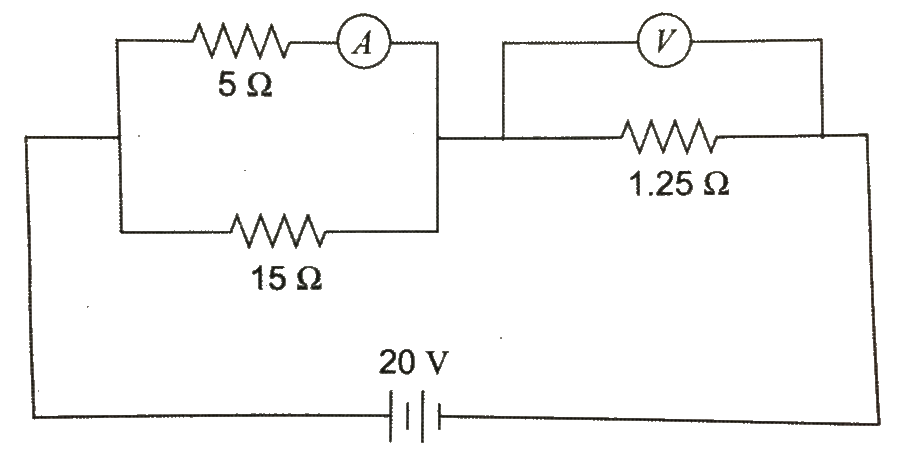
View SolutionIn Fig. 6.76, the ammeter (I) reads a current of 10mA, while the voltmeter reads a potential difference of 3V. The ammeters are identical, and the internal resistance of the battery is negligible (consider all ammeters and voltmers as nonideal).
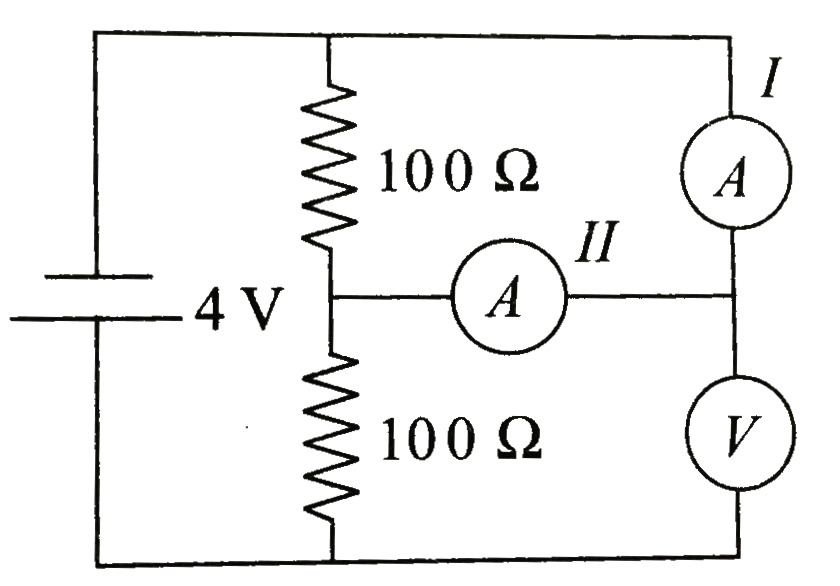
The resistance of ammeter is m×102Ω. What is the value of m ?
View SolutionWhen an object moves through a fluid, as when a ball falls through air or a glass sphere falls through water te fluid exerts a viscous foce F on the object this force tends to slow the object for a small sphere of radius r moving is given by stoke's law, Fw=6πηrv. in this formula η in the coefficient of viscosity of the fluid which is the proportionality constant that determines how much tangential force is required to move a fluid layer at a constant speed v, when the layer has an area A and is located a perpendicular distance z from and immobile surface. the magnitude of the force is given by F=ηAv/z. For a viscous fluid to move from location 2 to location 1 along 2 must exceed that at location 1, poiseuilles's law given the volumes flow rate Q that results from such a pressure difference P2−P1. The flow rate of expressed by the formula Q=πR4(P2−P1)8ηL poiseuille's law remains valid as long as the fluid flow is laminar. For a sfficiently high speed however the flow becomes turbulent flow is laminar as long as the reynolds number is less than approximately 2000. This number is given by the formula Re=2¯vρRη In which ¯v is the average speed ρ is the density η is the coefficient of viscosity of the fluid and R is the radius of the pipe. Take the density of water to be ρ=1000kg/m3
Q. Blood vessel is 0.10 m in length and has a radius of 1.5×10−3m blood flows at rate of 10−7m3/s through this vessel. The pressure difference that must be maintained in this flow between the two ends of the vessel is 20 Pa what is the viscosity sufficient of blood?
View SolutionTwo cells of emfs E1 and E2 and of negligible internal resistances are connected with two variable resistors as shown in Fig. A2.4. When the galvanometer shows no deflection, the values of the resistances are P and Q. What is the value of the ratio E2E1?
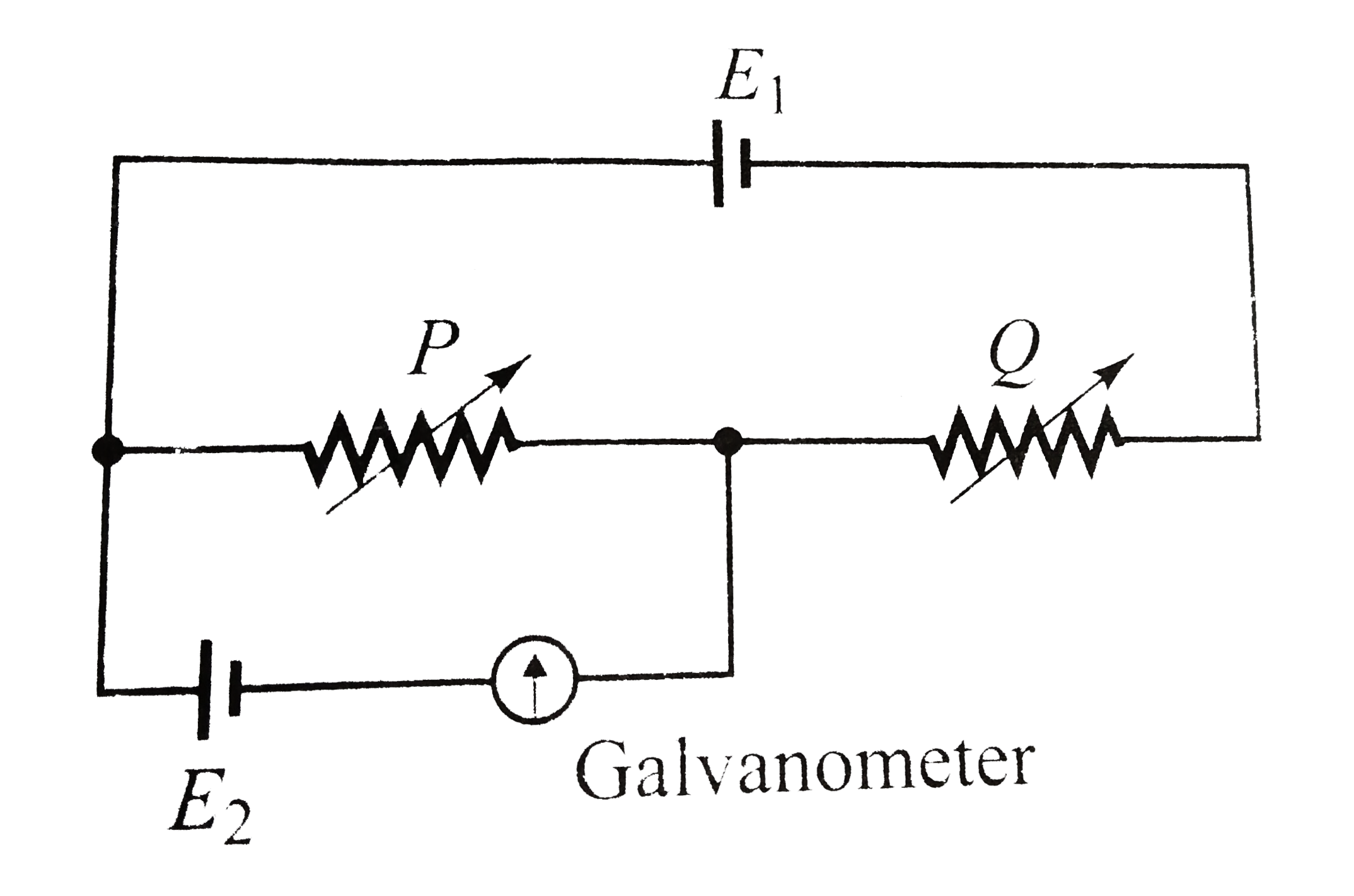
View SolutionThree similar light bulbs are connected to a constant to a constant voltage dc supply as shown in Fig.7.32. Each bulb operates at normal brightness and the ammeter ( of negligible resistance) registers a steady current. The filament of one of the bulbs breaks. What happens to the ammeter reading and to the brightness of the remaining bulbs?
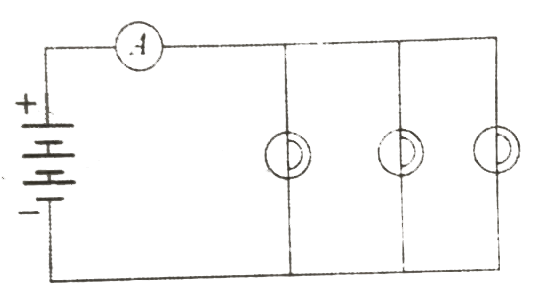
View SolutionIn a photocell the plates P and Q have a separation of 5 cm, which are connected through a galvanometer without any cell. Bichromatic light of wavelengths 4000Å and 6000Å are incidenton plate Q whose work- functionis 2.39 eV. If a uniform magnetic field B exists parallel to the plates, find the minimum value of B for which the galvanometer shows zero deflection.
View Solution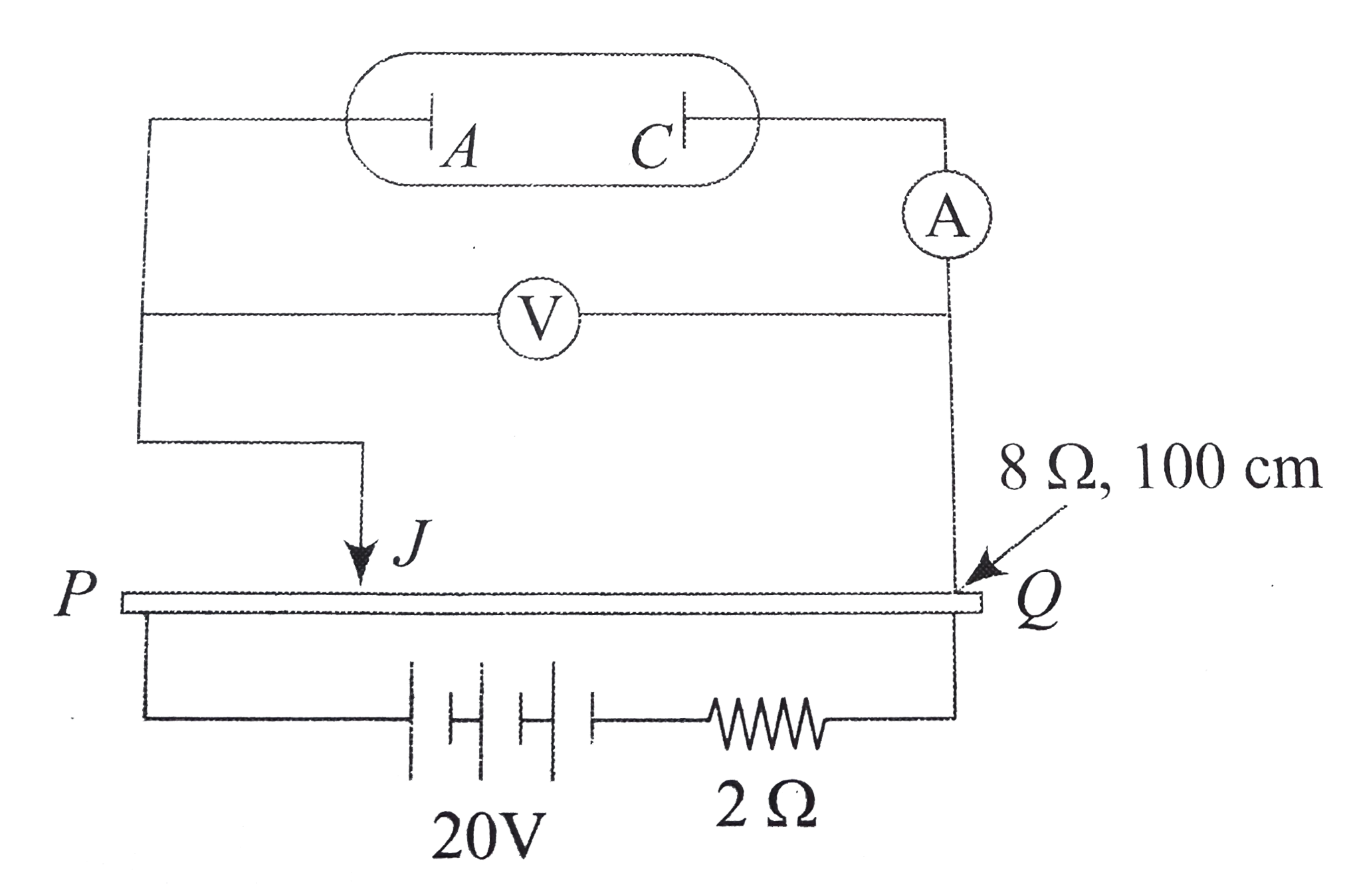
An experimental setup of verification of photoelectric effect is shown if Fig. The voltage across the electrodes is measured with the help of an ideal voltmeter, and which can be varied by moving jockey J on the potentiometer with wire. The battery used in potentiometer circuit is of 20 V and its internal resistance is 2Ω. The resistance of 100 cm long potentiometer wire is 8Ω.
The photocurrent is measured with the help of an ideal ammeter. Two plates of potassium oxide of area 50cm2 at separation 0.5mm are used in the vacuum tube. Photocurrent in the circuit is very small, so we can treat the potentiometer circuit as an independent circuit. The wavelength of various colors is as follows:
Q. When other light falls on the anode plate, the ammeter reading remains zero till jockey is moved from the end P to the middle point of the wire PQ. Thereafter, the deflection is recorded in the ammeter. The maximum kinetic energy of the emitted electron is
View Solution
